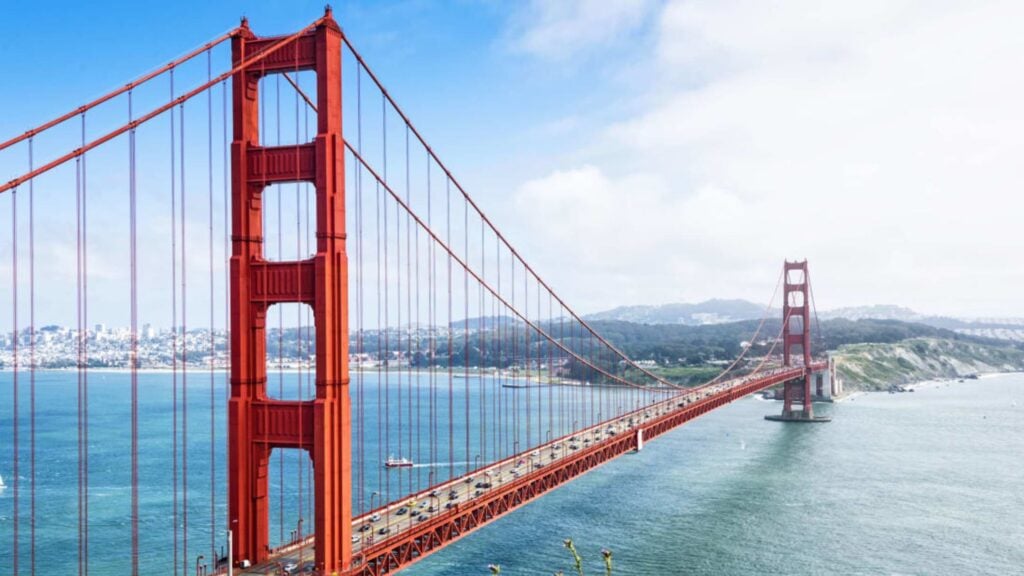The 1.7-mile-long Golden Gate Bridge connects San Francisco and Marin County, California, symbolizing the San Francisco Bay region. The suspension bridge was an engineering wonder when it was completed in 1937. It was the world’s largest suspension bridge. But did you know that an earthquake occurred during the construction of the Golden Gate Bridge?
An earthquake occurred during the Golden Gate Bridge’s construction, trapping a dozen workers on top of one of the towers, swaying 16 feet back and forth while coworkers puked on the deck.
Were There Safety Nets in the Area?
During construction, a safety net was stretched 10 feet wider than the bridge’s breadth and 15 feet longer than its length beneath the bridge’s floor. The net proved to be a vital safeguard, saving the lives of 19 soldiers. These individuals were known as the Half-Way-to-Hell Club. Unfortunately, 11 men died during the bridge’s construction. (Source: History)
Was the Bridge Supposed to be Orange?
The US Navy had pushed for the bridge to be painted in blue and yellow stripes to make it more visible. The consulting architect decided the color was both extremely visible and more pleasant to the eye. But when the steel arrived in San Francisco, it was coated in a burned red tint as priming. International orange is the official color of the bridge. (Source: History)
The Firsts at Golden-Gate Bridge on Opening Day
On May 27, 1937, San Franciscans observed Pedestrian Day commemorating the opening of the Golden Gate Bridge. On that day, up to 200,000 people crossed the bridge. People competed to be the first to cross the Golden Gate Bridge, running, pushing a baby stroller, and even roller-skating. (Source: History)
How Much Did It Cost to Cross the Golden Gate Bridge in 1937?
The bridge’s first toll was 50 cents each way, or nearly $18.00 roundtrip today. Back then, 50 cents was a significant sum considering it was the era of the Great Depression. Tolls on the Golden Gate Bridge are now only collected in one direction, southbound into San Francisco. (Source: History)
The Day The Bridge Flattened
On May 24, 1987, San Francisco held a bridge walk to commemorate the Golden Gate Bridge’s 50th anniversary. An estimated 300,000 people crammed like sardines onto the bridge, and it began to creak and shake. The iconic arch flattened when the bridge’s midsection sank seven feet beneath the tremendous weight.
The bridge was promptly closed, preventing another 600,000 people from crossing. Engineers later claimed that because the bridge was designed to bend, it was never at risk of collapse. (Source: History)
The 30-Year Health Project
The Golden Gate Bridge was painted with a two-thirds lead primer in the 1930s. The lead-based paint was supposed to protect the steel framework from corrosion, but it was later discovered that lead is toxic to humans and the environment.
In 1965, a massive cleanup effort to remove all of the bridge’s lead-based paint began and finished in 1995. Instead, zinc-based priming paint is now used. According to the Golden Gate Bridge Highway Transportation District, zinc is a sacrificial metal that protects the steel from rust. (Source: History)
